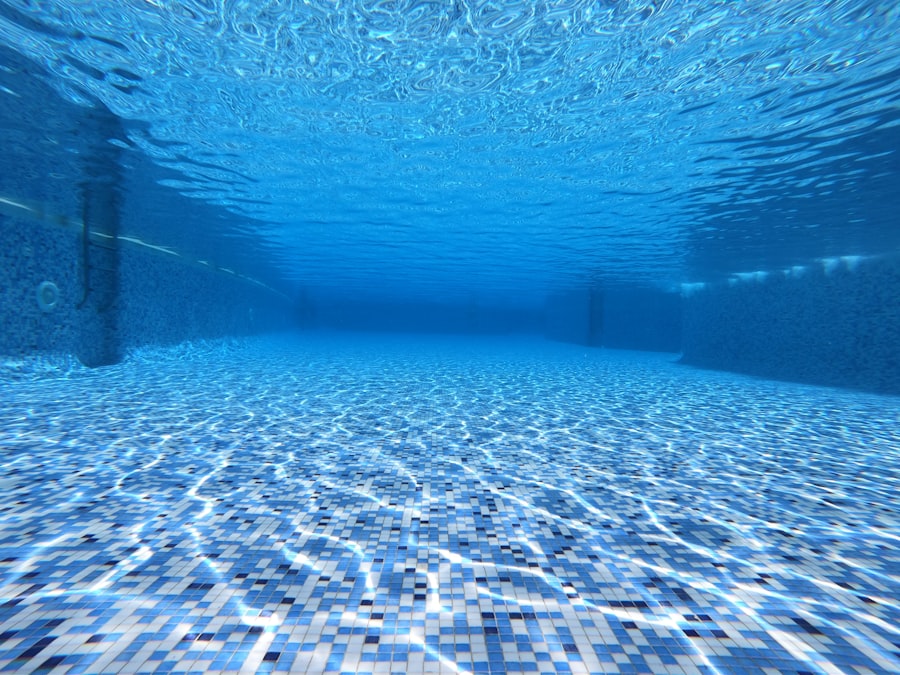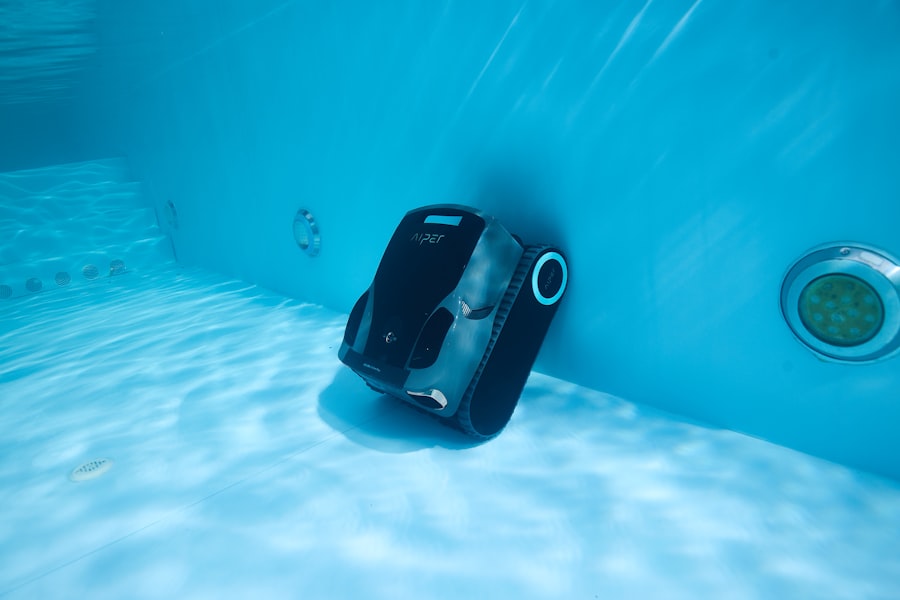The underwater world is a realm of extraordinary phenomena, where the laws of physics manifest in ways that are both fascinating and complex. The concept of a “physics wall” underwater refers to the myriad of physical principles that govern the behavior of objects and organisms in this unique environment. From the moment one descends beneath the surface, they encounter a landscape shaped by forces that differ significantly from those experienced on land.
The interplay of gravity, buoyancy, pressure, and resistance creates a dynamic setting that challenges our understanding of movement and stability. As divers or marine explorers navigate this submerged world, they become acutely aware of how these physical principles influence their experience. The sensation of weightlessness, for instance, is a direct result of buoyancy counteracting gravitational pull.
This phenomenon allows divers to float effortlessly, but it also requires a keen understanding of how to manipulate their position in the water column. The physics wall is not merely a barrier; it is a gateway to understanding the intricate relationships between forces that define life beneath the waves.
Key Takeaways
- The Physics Wall Underwater offers a fascinating world of exploration and discovery.
- Buoyancy is the principle that allows objects to float or sink in water, based on their density and the density of the surrounding fluid.
- Pressure increases with depth underwater, affecting the behavior of gases and liquids.
- Density plays a crucial role in determining the behavior of objects and substances in underwater environments.
- Light and sound behave differently in water compared to air, impacting communication and visibility for underwater exploration.
Understanding the Principles of Buoyancy
Buoyancy is one of the fundamental principles that govern underwater physics, dictating how objects behave when submerged in a fluid. This principle, articulated by Archimedes, states that an object immersed in a fluid experiences an upward force equal to the weight of the fluid it displaces. This upward force is what allows submarines to dive and surface, as well as enabling fish to maintain their position in the water column without expending excessive energy.
The implications of buoyancy extend beyond simple floating or sinking. For instance, the design of diving equipment, such as wetsuits and buoyancy control devices, relies heavily on an understanding of buoyancy principles. These tools allow divers to achieve neutral buoyancy, where they neither ascend nor descend, facilitating exploration and observation without disturbing the delicate underwater ecosystem.
By mastering buoyancy, divers can navigate with grace and precision, enhancing their ability to interact with marine life and conduct research.
Exploring the Effects of Pressure at Different Depths

As one descends into the depths of the ocean, the effects of pressure become increasingly pronounced. Water exerts pressure on objects based on its depth, with every 10 meters adding approximately one atmosphere of pressure.
For example, deep-sea creatures have evolved unique adaptations to withstand extreme pressures that would crush most terrestrial life forms. The impact of pressure is not limited to biological entities; it also affects equipment used in underwater exploration.
Understanding how pressure behaves at various depths is crucial for engineers and scientists alike, as it informs the development of technology that can explore the ocean’s most remote regions.
The Role of Density in Underwater Physics
| Aspect | Details |
|---|---|
| Definition | The mass per unit volume of a substance |
| Formula | Density = Mass / Volume |
| Units | kg/m^3 or g/cm^3 |
| Effect on Buoyancy | Higher density leads to higher sinking tendency |
| Impact on Pressure | Higher density increases pressure at a given depth |
Density plays a pivotal role in determining how objects behave in water. Defined as mass per unit volume, density influences whether an object will float or sink when placed in a fluid. An object with a density greater than that of water will sink, while one with a lower density will float.
This principle is essential for understanding not only the behavior of solid objects but also the dynamics of marine organisms. Marine life exhibits a remarkable range of adaptations related to density. For instance, many fish possess swim bladders—gas-filled sacs that allow them to regulate their buoyancy by adjusting their internal density.
This adaptation enables them to conserve energy while swimming at various depths. Additionally, understanding density is crucial for marine engineers who design vessels and underwater structures, ensuring they can achieve stability and functionality in a constantly changing environment.
Investigating the Behavior of Light and Sound in Water
The behavior of light and sound in water presents another layer of complexity within underwater physics. Light travels more slowly in water than in air, leading to phenomena such as refraction and scattering. As light penetrates deeper into the ocean, its intensity diminishes, resulting in a spectrum of colors that fade from vibrant blues and greens to darker hues.
This change affects not only visibility but also the behavior of marine organisms that rely on light for navigation and hunting. Sound waves, on the other hand, travel much more efficiently in water than in air due to water’s higher density. This property allows marine animals to communicate over vast distances using echolocation and other vocalizations.
Understanding how sound propagates underwater is essential for researchers studying marine biology and ecology, as it provides insights into animal behavior and habitat use. The interplay between light and sound creates a rich tapestry of interactions that define life beneath the waves.
Examining the Impact of Water Resistance on Movement

Water resistance is a significant factor influencing movement in aquatic environments. Unlike air, water is denser and more viscous, creating drag that affects how objects move through it. This resistance can be both a challenge and an advantage for divers and marine creatures alike.
For instance, while water resistance can slow down movement, it also provides lift and support for swimming organisms. Marine animals have evolved various adaptations to minimize drag while maximizing propulsion. Fish exhibit streamlined bodies that reduce resistance as they swim, allowing them to move efficiently through their environment.
Similarly, divers must consider water resistance when planning their movements; techniques such as streamlined positioning can enhance their speed and efficiency underwater. Understanding water resistance is crucial for both biological adaptation and human engineering in aquatic settings.
Uncovering the Forces Acting on Diving Equipment
Diving equipment is subject to various forces that must be carefully considered during design and use. These forces include buoyancy, pressure, and water resistance—all of which interact dynamically as divers explore underwater environments. For example, a diver’s wetsuit must provide thermal insulation while also allowing for flexibility and ease of movement against water resistance.
Additionally, equipment such as tanks and regulators must be engineered to withstand high pressures encountered at depth while ensuring safe air supply for divers. The interplay between these forces requires meticulous attention to detail during the design process to ensure safety and functionality. By understanding the physics behind these forces, engineers can create equipment that enhances the diving experience while minimizing risks associated with underwater exploration.
Analyzing the Physics Behind Underwater Acoustics
Underwater acoustics is a fascinating field that explores how sound behaves in aquatic environments. Sound waves travel faster in water than in air due to its higher density, allowing marine animals to communicate over long distances effectively. This phenomenon has significant implications for both marine biology and environmental monitoring.
Researchers utilize underwater acoustics to study marine life behavior, migration patterns, and even oceanographic conditions. By analyzing sound patterns and frequencies emitted by various species, scientists can gain insights into their communication methods and social structures. Furthermore, understanding underwater acoustics is essential for developing technologies such as sonar systems used in navigation and exploration, highlighting its importance across multiple disciplines.
Discovering the Dynamics of Underwater Waves
The dynamics of underwater waves are influenced by various factors including wind speed, water depth, and topography. Waves play a crucial role in shaping coastal environments and influencing marine ecosystems. As waves travel through water, they transfer energy that can affect sediment transport and nutrient distribution within aquatic habitats.
Understanding wave dynamics is essential for marine engineers involved in coastal development projects or those studying ocean currents’ effects on climate patterns. By analyzing wave behavior, researchers can predict potential impacts on coastal communities and ecosystems while informing sustainable practices for managing marine resources.
The Influence of Temperature and Salinity on Underwater Physics
Temperature and salinity are two critical factors that influence underwater physics significantly. Variations in temperature affect water density; warmer water is less dense than colder water, leading to stratification within aquatic environments. This stratification can impact nutrient distribution and marine life habitats.
Salinity also plays a vital role in determining water density and buoyancy effects on organisms. Changes in salinity can influence osmoregulation in marine species, affecting their survival and distribution patterns. Understanding these factors is essential for researchers studying ocean health and climate change impacts on marine ecosystems.
Applying Underwater Physics in Marine Engineering and Exploration
The principles of underwater physics have far-reaching applications in marine engineering and exploration efforts. Engineers utilize knowledge about buoyancy, pressure dynamics, acoustics, wave behavior, temperature variations, and salinity when designing vessels capable of navigating challenging aquatic environments safely. Moreover, advancements in technology driven by an understanding of underwater physics have revolutionized exploration methods—from remotely operated vehicles (ROVs) equipped with sophisticated sensors to autonomous underwater vehicles (AUVs) capable of conducting extensive surveys without human intervention.
These innovations enable scientists to gather valuable data about ocean health while minimizing human impact on delicate ecosystems. In conclusion, the wonders of underwater physics encompass a vast array of principles that govern life beneath the waves—from buoyancy’s role in movement to the effects of pressure at different depths. By exploring these concepts further through research and engineering applications, humanity can deepen its understanding of our oceans while fostering sustainable practices for future generations.
In recent years, the concept of a physics wall underwater has intrigued scientists and engineers alike, as it presents unique challenges and opportunities for underwater construction and exploration. A related article that delves into the intricacies of underwater physics and its applications can be found on XFileFindings. This article explores the various technologies and methodologies employed in creating stable structures beneath the ocean’s surface, highlighting the innovative approaches being developed to overcome the harsh underwater environment. For more detailed insights, you can read the full article by visiting this link.
WATCH THIS! 550 Knots Underwater Should Not Be Possible
FAQs
What is the physics wall underwater?
The physics wall underwater is a concept that refers to the physical principles and phenomena that occur when objects or substances interact with water.
What are some examples of physics principles at work underwater?
Some examples of physics principles at work underwater include buoyancy, pressure, density, and fluid dynamics.
How does buoyancy work underwater?
Buoyancy is the upward force exerted by a fluid on an object immersed in it. This force is equal to the weight of the fluid displaced by the object, and it allows objects to float or sink in water.
What is the significance of understanding the physics wall underwater?
Understanding the physics wall underwater is important for various applications such as marine engineering, underwater construction, scuba diving, and oceanography. It helps in designing structures, predicting behavior of objects underwater, and ensuring safety in underwater activities.
How does pressure change with depth underwater?
Pressure increases with depth underwater due to the weight of the water above. This is described by the equation P = ρgh, where P is the pressure, ρ is the density of the fluid, g is the acceleration due to gravity, and h is the depth.
What role does density play in underwater physics?
Density is a measure of how much mass is contained in a given volume. In underwater physics, density affects buoyancy and the behavior of objects in water. Objects with higher density than water will sink, while those with lower density will float.
